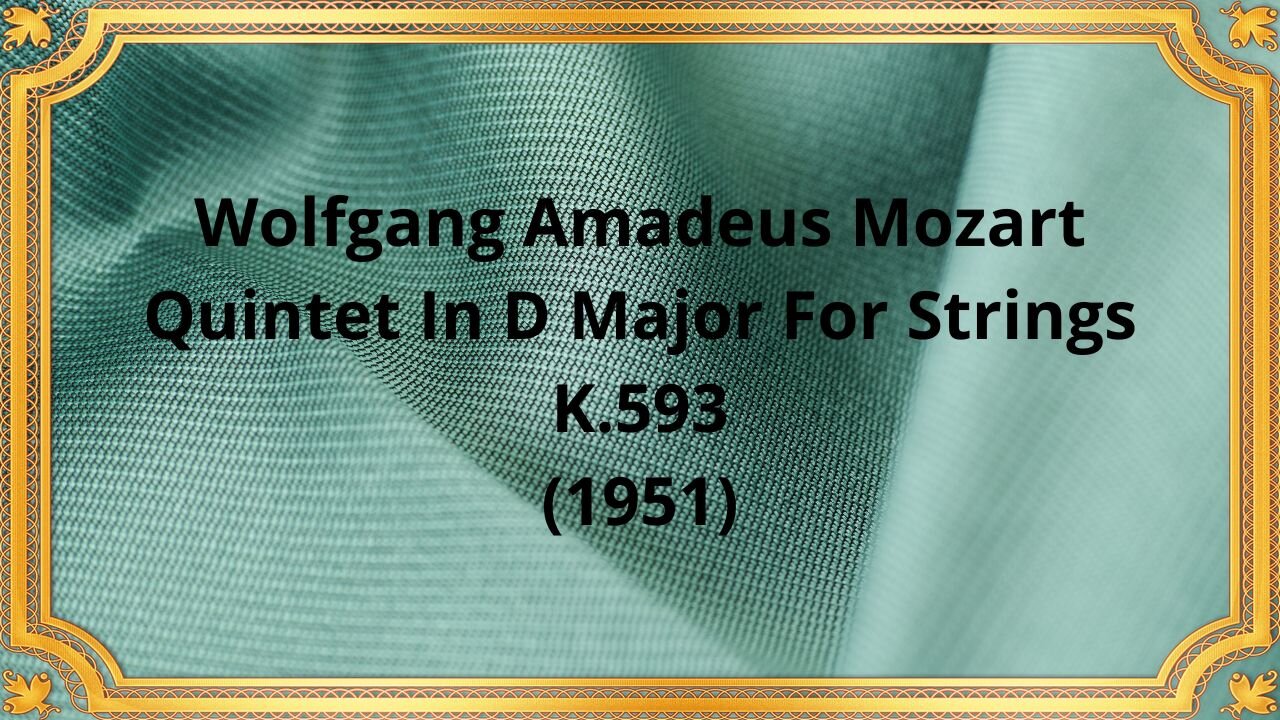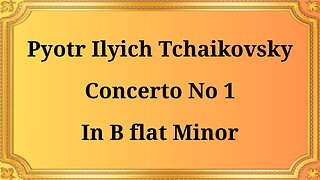Premium Only Content

Wolfgang Amadeus Mozart Quintet In D Major For Strings K.593 (1951)
#Mozart #ClassicalMusic #StringEnsemble #ChamberMusic #MusicComposition #MusicHistory #MusicTheory #MusicAppreciation #MusicAnalysis #ClassicalEra
Publication date 1951
Budapest String Quartet
Milton Katims, viola
The Wolfgang Amadeus Mozart Quintet in D Major for Strings, K.593, is a remarkable composition that showcases the genius of one of classical music's most celebrated composers, Wolfgang Amadeus Mozart. As a quintet, this piece is written for two violins, two violas, and a cello, representing a string ensemble that creates a rich and harmonious sound.
Composed during Mozart's prolific period in Vienna in 1790, the Quintet in D Major is a testament to his mastery of form and structure. This work is a prime example of classical chamber music, a genre that flourished during the classical era. Chamber music, typically written for small ensembles, allowed for intimate and intricate musical dialogue among the instruments.
The Quintet in D Major begins with a majestic and lively Allegro movement. The opening theme is presented by the violins, followed by the violas and cello, creating a beautiful interplay of melodies. The movement is characterized by its joyful and exuberant nature, showcasing Mozart's exceptional craftsmanship and his ability to compose music that is both technically challenging and emotionally engaging.
The second movement, marked Andante, contrasts the first movement with its serene and introspective atmosphere. It features a lyrical melody that is passed between the instruments, evoking a sense of tranquility and introspection. This movement demonstrates Mozart's sensitivity and his ability to create deeply emotive music.
The third movement, a Menuetto, is a delightful and graceful dance in triple meter. It exhibits a charming and playful character, with each instrument taking turns to present the dance-like melodies. Mozart's skillful handling of the interplay between the instruments adds to the overall charm and elegance of this movement.
The final movement, marked Allegro, brings the quintet to a rousing and energetic conclusion. It is a spirited and lively movement that showcases Mozart's virtuosity as a composer. The interweaving melodies and the intricate counterpoint between the instruments create a sense of exhilaration and joy.
Overall, the Quintet in D Major for Strings, K.593, is a testament to Mozart's musical genius and his ability to craft intricate and emotionally captivating compositions. Through its four movements, this quintet showcases Mozart's mastery of form, his gift for melody, and his ability to create music that resonates with audiences even centuries later.
Wolfgang Amadeus Mozart Quintet in D Major for Strings, K.593, offers a captivating and immersive musical experience. Its combination of technical brilliance, emotional depth, and sheer musical beauty make it a true gem in the classical music repertoire.
You have the opportunity to support the channel:
https://destream.net/live/RadSiarAl/donate
-
 31:06
31:06
Classical music_Music Inspiration
14 days agoPyotr Ilyich Tchaikovsky Piano Concerto No. 1 in B-flat minor
511 -
 25:38
25:38
TheRoyaltyAutoService
13 hours agoThis 2020 Nissan Murano Was In The Shop For Months & Gave Him Nightmares…
1.75K -
 9:57
9:57
Red Pill MMA
18 hours agoIrish Media Corruption & Lies EXPOSED
1.74K9 -
 31:05
31:05
ArturRehi
22 hours agoKarma Arrives in Russia - Explosions, Fear and Panic | Ukraine Update
2.5K5 -
 12:57
12:57
Tactical Considerations
16 hours agoThe ONLY AK I Ever Wanted.. A Modern AK
2.08K -
 6:58
6:58
The Shannon Joy Show
13 hours ago🔥Teen Girl Just Changed NY Law🔥
3.2K -
 32:40
32:40
James Klüg
1 day agoAnti-Trump Protesters Get FACT CHECKED In Real Time
10.7K16 -
 10:27
10:27
TheAsherShow
22 hours agoDuolingo Is The Absolute Worst
2.74K4 -
 13:11
13:11
Actual Justice Warrior
1 day agoWhite Guilted Judge Admits He Was WRONG
13.3K8 -
 25:56
25:56
DeVory Darkins
1 day ago $9.45 earnedDemocrat Mayor EXPLODES on Camera after ICE raid as Bondi makes SHOCKING announcement
21K117